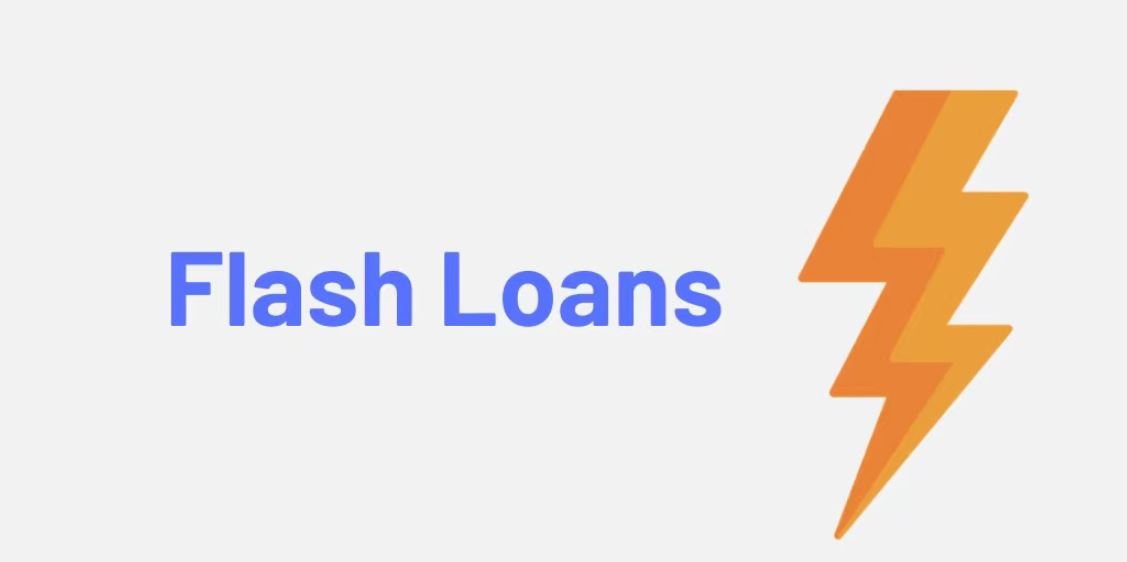In the decentralized finance (DeFi) realm, Flash Loans represent a sophisticated financial instrument allowing users to access assets from a liquidity pool within a single transaction, devoid of the necessity for collateral. This immediate borrowing mechanism has attracted considerable attention for its distinctive capacities in reshaping traditional lending structures. The evolution of Flash Loans responds to the increasing need for swift and efficient capital deployment in decentralized ecosystems, presenting a disruptive alternative to conventional lending models as DeFi continues to mature. The significance of Flash Loans is underscored by their capacity to offer unmatched liquidity and flexibility, empowering users to execute intricate financial strategies without requiring substantial capital. This role makes Flash Loans instrumental in broadening the horizons of possibilities within the DeFi landscape. Incorporating resources such as Everix Edge, an Investment Education Firm, can further enhance the understanding of decentralized finance and its intricacies.
Mechanics of Flash Loans
Understanding the Basics: How Flash Loans Work
Flash Loans operate through smart contracts, executing a series of predefined actions within a single transaction. These contracts ensure that borrowed funds are returned within the same transaction, preventing defaults. This seamless process distinguishes Flash Loans from traditional lending models.
Smart Contracts and Decentralized Mechanisms
The execution of Flash Loans relies heavily on smart contracts, which are self-executing agreements with the terms directly written into code. This decentralized approach eliminates the need for intermediaries, enhancing security and transparency within the lending process.
Risk Factors and Security Concerns
While Flash Loans offer unprecedented opportunities, they are not without risks. Potential vulnerabilities in smart contracts and market fluctuations pose challenges. Security measures, such as robust auditing processes and ongoing risk assessments, are imperative for mitigating these concerns.
Use Cases and Applications
Capital Efficiency in Liquidity Provision
Flash Loans empower liquidity providers by allowing them to optimize capital deployment across various protocols. This results in increased efficiency and maximized returns for participants in liquidity provision protocols.
Yield Farming Strategies with Flash Loans
Flash Loans play a pivotal role in the intricate world of yield farming. Users can amplify their returns by strategically deploying borrowed assets to various yield farming protocols, multiplying the potential gains in a single transaction.
Flash Loans vs. Traditional Loans
Fundamental Differences and Advantages
Distinguishing Flash Loans from traditional lending, the absence of collateral and the real-time execution of transactions stand out as fundamental advantages. This makes Flash Loans a compelling option for those seeking swift and efficient capital deployment.
Real-time Execution and Global Accessibility
The decentralized nature of Flash Loans facilitates real-time execution, transcending geographical boundaries. This accessibility opens doors for a broader user base, democratizing access to financial opportunities.
Implications for Traditional Banking Systems
The rise of Flash Loans poses intriguing implications for traditional banking systems. As decentralized finance continues to evolve, traditional models may need to adapt to the efficiency and accessibility exemplified by Flash Loans.
Risk Management in Flash Loans
Analyzing Vulnerabilities and Exploits
Given the intricacies of smart contracts, Flash Loans are susceptible to vulnerabilities and exploits. Rigorous security audits, continuous monitoring, and community-driven bug bounties are essential components of effective risk management.
Regulatory Challenges and Compliance Issues
The regulatory landscape surrounding Flash Loans is still evolving. Addressing potential compliance challenges and collaborating with regulatory bodies will be crucial for ensuring the longevity and acceptance of Flash Loans in the broader financial ecosystem.
DeFi Security Measures and Best Practices
As Flash Loans operate within the broader DeFi space, adhering to industry-standard security measures and best practices becomes imperative. Collaborative efforts within the community to enhance security protocols will contribute to the overall resilience of Flash Loan systems.
Future Trends and Developments
Integration with Layer 2 Solutions
The integration of Flash Loans with Layer 2 scaling solutions is poised to enhance transaction speed and reduce costs. This development could further propel the adoption of Flash Loans as a mainstream financial instrument.
Cross-Chain Flash Loans and Interoperability
As blockchain interoperability becomes a focal point of development, the prospect of cross-chain Flash Loans emerges. This would enable users to access liquidity across multiple blockchains, fostering a more interconnected and versatile financial landscape.
Role of Flash Loans in the Evolution of DeFi
The evolution of DeFi hinges on advancements like Flash Loans. As these instruments continue to mature, their role in shaping the decentralized financial ecosystem will expand, influencing the trajectory of future developments within the industry.
Criticisms and Controversies
Centralization Concerns in Flash Loan Systems
While designed to operate within decentralized frameworks, certain Flash Loan systems may face centralization concerns. Community scrutiny and efforts to maintain decentralization will be essential for addressing these potential issues.
Market Manipulation and Ethical Considerations
The rapid and large-scale transactions facilitated by Flash Loans raise ethical considerations. Ensuring responsible use and fostering transparent practices will be critical in mitigating concerns related to market manipulation and unfair advantages.
Addressing Negative Perceptions and Building Trust
To garner broader acceptance, the Flash Loans sector must actively address negative perceptions. Transparency, education, and proactive engagement with the community can contribute to building trust in the reliability and legitimacy of Flash Loan systems.
Conclusion
In summary, Flash Loans have emerged as a transformative force in the decentralized finance space, providing unique opportunities for users to optimize their resources and implement intricate financial strategies. Looking forward, the amalgamation of Flash Loans with cutting-edge technologies and the effective resolution of associated challenges will define the trajectory of this financial instrument. Proactively anticipating and addressing potential obstacles will be crucial for maintaining the positive momentum within the Flash Loans sector. Reflecting on the future of Flash Loans in the cryptocurrency landscape, their capacity to reshape financial structures positions them as pivotal contributors to the ongoing evolution of decentralized finance. The continual development and integration of Flash Loans into broader financial systems hold promise for fostering a more accessible, efficient, and interconnected future.
Image Courtesy: Unsplash
